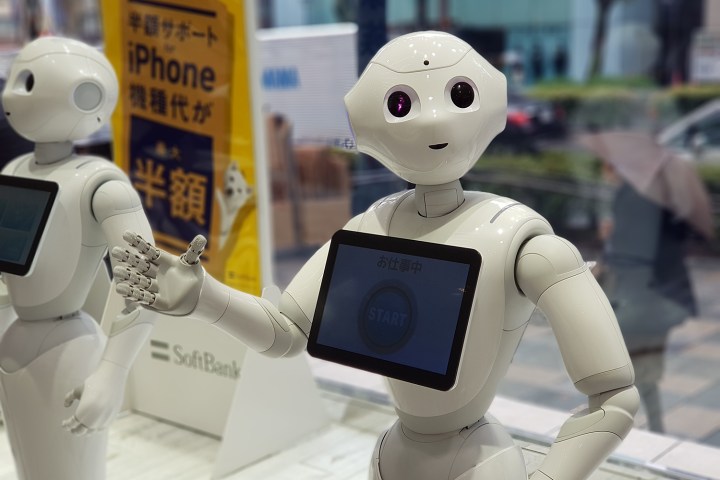Pepper is a friendly robotic fella who can interact with humans and even be your best buddy, if you like.
SoftBank, which created the cute humanoid robot in collaboration with French robotics company Aldabaran SAS, had high hopes for Pepper when the first one rolled off the production line in 2015.
Since then, Pepper has been turning up in all manner of places, from train stations to hospitals to departments stores, mostly to entertain shoppers rather than take on any particularly demanding tasks.
We’ve now learned that Pepper’s latest gig is at a Pizza Hut in Singapore, where the 120-cm-tall robot will make menu recommendations and take orders from hungry customers.
The initiative is being run in collaboration with Mastercard, which hopes the robot will help it to highlight its secure Masterpass digital payments system. To get started, a customer first needs to ensure they have the Pizza Hut app on their phone before signing in with Masterpass.
To prepare Pepper for what Mastercard is calling “conversational commerce,” the credit card company worked with robotics and artificial intelligence firm Teksbotics to create voice-based, interface technologies for Pepper, which connect with Mastercard’s own secure payment services.
Mastercard describes the resulting process as a “safe and easy voice-assisted commerce experience with the potential to be adopted across various environments — from retail to restaurants like Pizza Hut and beyond.”
But a video (below) shot by local media showing a Mastercard executive putting Pepper through its paces at Pizza Hut reveals the ordering process to be somewhat on the slow side. To be fair, Pepper performs pretty well in the interaction, offering choices that are shown on its torso-based tablet and responding in a chatty manner, but it takes nearly three minutes to order a single pepperoni pizza.
At this stage, there’s no serious plan for Pizza Hut to replace human staff with Pepper robots. The robot doesn’t appear ready for complex tasks, but it could certainly make a routine visit to the restaurant a little more fun for customers.
Let’s just hope this particular Pepper performs better than another one that recently started work at a grocery store in Scotland. While it could offer simple advice on the location of different items within the store, its overall performance fell short of expectations, prompting the manager to fire poor Pepper.



